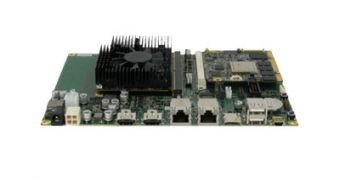NVIDIA did make it fairly clear it was going to milk the ARM cow for all it was worth and, sure enough, it now has what it claims will enable ARM supercomputers.
The idea of ARM supercomputers may not be particularly appealing, but some sorts of computations could definitely do with a more energy efficient means of being carried out.
Certainly, ARM chips don't support x64 (yet), but that does not mean that companies behind it aren't going to find some uses for it anyway.
NVIDIA is one of those companies and has made its support crystal clear now that the Carma exists.
Carma is a development kit for the easy creation of HPC applications that want both ARM computing prowess and parallel processing.
It uses the Tegra 3 chip as the basis and, thus, has four ARM cores and an NVIDIA GPU.
More specifically, the Carma is a quad-core with an NVIDIA Quadro 1000M GPU backing it up (the graphics has 96 CUDA Cores and 2GB GPU Memory).
In addition, the platform has 2 GB of DDR3 RAM (random access memory) as well.
Other features include four PCI Express Gen1 links, Gigebit Ethernet Network support, an USB connector, HDMI, Displayport and a SATA port.
“Powered by a Tegra 3 quad-core ARM-based processor and an NVIDIA CUDA-enabled GPU, the CARMA DevKit is being developed to support energy-efficient HPC projects using ARM-based GPU computing. In fact, this technology will power the Barcelona Supercomputing Center’s ARM-based GPU supercomputer,” says Devang Sachdev on the NVIDIA blog.
The DevKit is based on the Ubuntu iteration of the Linux operating system (OS) and has a Single Precision performance of 270 GFLOPS.
Unfortunately, Carma does not support double precision computing, which is more or less crucial for HPC applications.
Thus, the development kit could be good for research, but won't actually persuade people that CUDA on ARM is that incredible in supercomputers.

 14 DAY TRIAL //
14 DAY TRIAL //